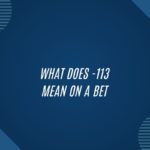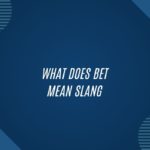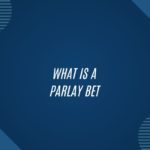Explanation of Odds
Odds in betting represent the likelihood of a particular outcome occurring. They are typically presented in three main formats: decimal odds, fractional odds, and American odds. Decimal odds are the most common format used in Europe and show the potential return on a one-unit stake, including the initial stake. For example, odds of 2.50 mean that a successful bet of $1 will yield a total return of $2.50.
Fractional odds, often used in the UK, are displayed in the format of a fraction, such as 7/1. This means that for every unit staked, you will receive seven units in profit if the bet is successful. On the other hand, American odds are commonly used in the U.S. and consist of a positive or negative number. Positive odds (+150) indicate the potential profit on a $100 bet, while negative odds (-200) represent the amount needed to bet in order to win $100.
Decimal Odds
Decimal odds are a common way to present betting odds in numerical form. They represent the potential return on a bet, taking into account the stake and the profit. In decimal odds, the number represents the total amount that will be returned on a winning bet, including the stake. For example, odds of 2.50 indicate that for every unit staked, a total of 2.50 units will be returned if the bet wins.
One of the advantages of decimal odds is their simplicity and clarity. They make it easy for bettors to quickly calculate potential winnings by simply multiplying the stake by the odds. Decimal odds also make it easier to compare odds across different bookmakers and markets, as the format is standard and easy to understand. This transparency can help bettors make more informed decisions when placing their bets.
Fractional Odds
Fractional odds are commonly used in the UK and are displayed as a fraction, such as 5/1. The number on the left side represents the potential profit if the bet is successful, while the number on the right side denotes the amount wagered. For example, a 5/1 fractional odd means that for every £1 you bet, you could potentially win £5 in profits. If the odds are 1/4, it indicates that you will win £1 for every £4 wagered.
Understanding fractional odds is crucial for calculating potential payouts. If you see a fractional odd of 2/1, this means that if you bet £1 and the bet is successful, you will receive £2 in profit, plus your original £1 back. On the other hand, a fractional odd of 1/2 implies that you must bet £2 to potentially win £1 in profit, along with your initial £2 stake returned.
American Odds
American Odds, also known as moneyline odds, are commonly used in the United States for sports betting. Unlike decimal and fractional odds, American odds can be represented as either positive or negative numbers. A positive number indicates the amount that would be won from a $100 bet, while a negative number shows how much needs to be wagered to win $100.
Positive American odds are used for underdogs in a sports event, where the number represents the profit that would be made on a $100 bet. For example, if the odds are +200, a $100 bet would result in a $200 profit if successful. Conversely, negative American odds are for favorites and show how much needs to be bet to win $100. If the odds are -150, a $150 bet would be required to win $100.
Implied Probability
Implied Probability refers to the likelihood of an event happening based on the odds provided by bookmakers. It is a way to convert odds into a percentage that indicates the probability of a certain outcome. Understanding implied probability is crucial for bettors as it allows them to gauge the potential success of a wager and make informed decisions.
By calculating the implied probability, bettors can determine if the odds offered by bookmakers are in their favor or not. For example, if a team has odds of 2.00 in decimal format, the implied probability would be 50%. If a bettor believes that the team’s chances of winning are higher than 50%, then there may be value in placing a bet. Conversely, if the bettor thinks the team has less than a 50% chance of winning, it might be wiser to avoid the bet.















